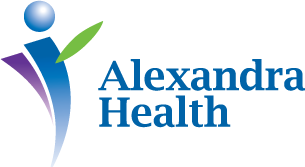Electronic Health System (EHR SYSTEM)
The advantages of electronic health records in the clinical setting are numerous and important. In the 2012 edition of the Physician Sentiment Index, published by Athena health and Sermo, 81% of physicians said they believe EHR's improve access to clinical data. More than two-thirds said an EHR can actually improve patient care.
The use of an electronic health records system offers these clinical advantages:
- No bulky paper records to store, manage and retrieve
- Easier access to clinical data
- The ability to establish and maintain effective clinical workflows
- Fewer medical errors, improved patient safety and stronger support for clinical decision-making
- The ability to gather and analyze patient data that enables outreach to discreet populations
- The opportunity to interact seamlessly with affiliated hospitals, clinics, labs and pharmacies
- Considering all the advantages of electronic health records, and the rapidly growing electronic interconnections of the health care world, even if EHRs had not been mandated by health care reform, their development and eventual ubiquity in the health care industry was inevitable.
The Impacts of Electronic Health Record Implementation on the Health Care Workforce
Health care organizations at various levels are transitioning into the new electronic era by implementing and adopting electronic health record systems. New job roles will be needed for this transition, and some current job roles will inevitably become obsolete due to the change. In addition to training new personnel to fill these new roles, the focus should also be on equipping the current health care workforce with knowledge and skills in health information technology and health information that will support their work and improve quality of care.The landscape for the practice of health care is changing. One change is the move from a predominating to increase effectiveness and efficiency in health care, various computer and informatitly paper-based practice environment to a predominantly electronic or paper-light environment. on technologies are being adopted and implemented by and for providers, administrators, and consumers in the health care industry. Electronic health records (EHRs), a key component of these health information technologies, have been implemented in health care organizations at all levels, from academic medical centers to multi-specialty medical groups to solo practices.
The landscape for the practice of health care is changing. One change is the move from a predominantly paper-based practice environment to a predominantly electronic or paper-light environment. Aiming to increase effectiveness and efficiency in health care, various computer and information technologies are being adopted and implemented by and for providers, administrators, and consumers in the health care industry. Electronic health records (EHRs), a key component of these health information technologies, have been implemented in health care organizations at all levels, from academic medical centers to multi-specialty medical groups to solo practices .
Several factors have contributed to the adoption of EHRs: the meaningful use incentive program from the federal government the advancement of computer and information technologies, including both hardware and software; and the shift from a volume-based system to one focused on quality and value of care. In the United States, the adoption rate of basic EHR systems among non-federal acute care hospitals has increased from 9.4% in 2008 to 75.5% in 2014—an 8-fold increase in 6 years. In North Carolina, almost all major health care systems have implemented new EHR systems in the past 5 years. The basic EHR adoption rate in North Carolina has increased from 11% in 2008 to 78.4% in 2014. Very soon, most of our health care data will exist only in digital formats in some health care organizations.
Any system-wide changes in a vertical industry like health care will shake up the original distribution of the workforce. Some new job roles will emerge, and some existing job roles will disappear. In other sectors, universal access to personal computing devices and e-mail communication caused typists to disappear from typical office settings. Likewise, post offices have adjusted their workforce needs and business hours because fewer people mail letters. Now that it is easier for consumers to order products online, the need has shifted from delivering letters to delivering packages. On the other hand, more information technology professionals are needed to manage e-mail servers and computing devices.
It is a challenge to define the health information technology (HIT) workforce, as this role is not a specific job category listed in the Bureau of Labor Statistics. An HIT professional could be a computer scientist working on diagnostic assistant software, a health information manager supervising information privacy, or a nurse who serves as a superuser for EHR implementation. Whatever their role, HIT personnel need to have knowledge about health care, or at least the workflow in health care organizations. Professionals working only with information technologies, such as computer networking technicians or database administrators, should not be considered part of the HIT workforce, although they may be employed in a health care setting. Their job market could grow due to EHR implementations, but they have little impact on the interaction between health care and information technology. Thus we will focus our discussion on those new job roles that will impact the interaction between health care and information technology.





Comments
Post a Comment